Brew a primitive mugwort lemon beer with foraged ingredients. This home brew is easy to make and so delicious! Mugwort is easy to forage for, smells delicious, and is a great herb to use in a homemade beer recipe
Homemade Herbal Brewing
You may remember several weeks ago that I made a starter from wild yeast. Once it was bubbling along nicely, I wanted to use it in something (of course).
Since I got the wild yeast recipe from Pascal Baudar’s book The New Wildcrafted Cuisine, I decided to try one of his foraged brew recipes using it.
I already had some foraged mugwort that I had dried recently, so the Mugwort Lemon Beer recipe caught my eye. I love how mugwort smells, and I could see how it would work well in a primitive brew.
This mugwort lemon beer is such a cool recipe! It’s not at all like a traditional beer, which can actually be quite complicated.
Honestly, around here we often brew traditional beer from kits, as it’s a much simpler process. This is more of a primitive style beer, though, and is super easy to make.
How to Make Mugwort Lemon Beer
The first step with any homebrewing recipe is to make sure that everything is properly sanitized. There are many sanitizers to choose from, but I like to use One Step brand as it’s easy to use and relatively non toxic.
A one gallon glass jug and airlock is recommended for this recipe, as are swing top bottles.
Mix the water, mugwort, and brown sugar in a large pot. Cut and squeeze the lemons into the pot. Bring the solution to a boil; let it boil for 30 minutes.
Place the pot into a pan of cold water; cool to 70°F (21°C), then add the yeast.
Strain the brew into your fermenter. Position the airlock or cover the fermenter with a paper towel or cheesecloth. Let the brew ferment for 10 days.
I decided to include a few of the juniper berries from the starter as well in the brew, one because I like the taste of them, and two because I thought it would help the yeast along a bit.
Siphon into beer bottles and prime the bottles with 1/2 tsp brown sugar for carbonation (optional). Close the bottles and store somewhere not too hot. The beer will be ready to drink in 3 to 4 weeks.
Tips for Using Wild Yeast Starter
I was given a few tips from Pascal with regard to using the wild yeast starter.
He recommended using less brown sugar if you prefer a not so sweet brew, as the wild yeast usually doesn’t ferment it all out. I used about 1 pound.
He says to use about 1 cup of wild yeast starter for a gallon of brew.
When using wild yeast, the beer should be bubbling away nicely after 2-3 days. Count 10 days after this before bottling.
Mine was still brewing quite vigorously after 10 days, possibly because of the addition of the juniper berries, so I waited another week to bottle mine.
I also decided not to prime the bottles, as it was still bubbling nicely. The end result was a fizzy and delicious beer!
I was so happy with the results of this beer! I will definitely be making this and other brews like it from Pascal’s book again.
It was fun to use foraged ingredients, and I loved using the wild yeast! The flavor was amazing, and it was also cheap to make. A winner in my opinion!
The New Wildcrafted Cuisine is such a cool book with so many amazing recipes. Its main focus is foraging and wildcrafting, but there are also many fermented recipes as well. Totally my kind of thing, and I think that you will love it!
More Homebrewing Recipes
Ready for your next brewing adventure? Try one of these tasty recipes!
Mugwort Lemon Beer Recipe
Equipment
Ingredients
- 1 gallon spring water or distilled water
- .3 ounce (8g) dried mugwort leaves
- 1.25 lb dark brown sugar
- 3 large lemons
- 1 cup wild yeast starter
Instructions
- Mix the water, mugwort, and brown sugar in a large pot. Cut and squeeze the lemons into the pot. Bring the solution to a boil; let it boil for 30 minutes.
- Place the pot into a pan of cold water; cool to 70°F (21°C), then add the yeast.
- Strain the brew into your fermenter. Position the airlock or cover the fermenter with a paper towel or cheesecloth. Let the brew ferment for 10 days.
- Siphon into beer bottles and prime the bottles with 1/2 tsp brown sugar for carbonation (optional). Close the bottles and store somewhere not too hot. The beer will be ready to drink in 3 to 4 weeks.
Notes
- This recipe is from Pascal Baudar’s book The New Wildcrafted Cuisine.
- Use less brown sugar if you prefer a not so sweet brew, as the wild yeast usually doesn’t ferment it all out. I used about 1 pound.
- When using wild yeast, the beer should be bubbling away nicely after 2-3 days. Count 10 days after this before bottling.


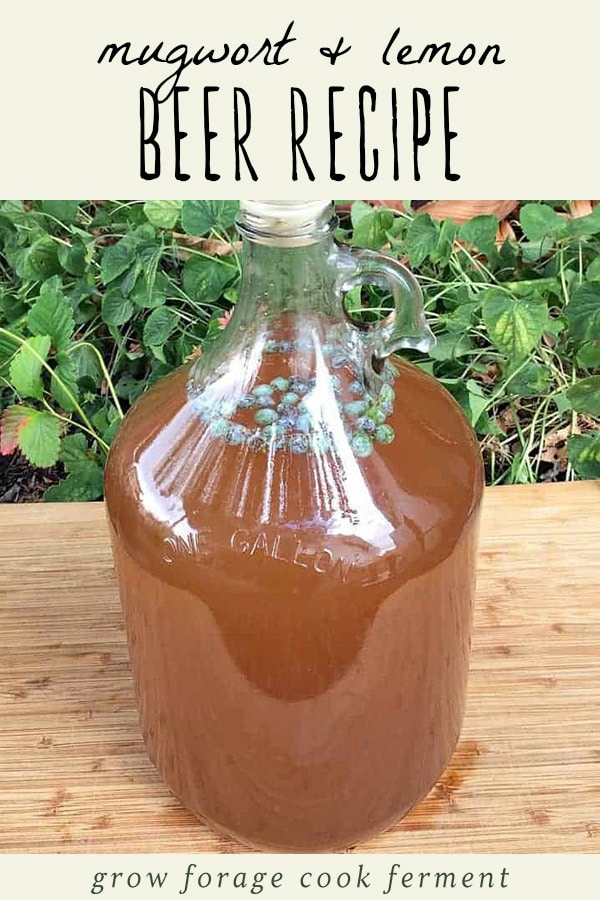
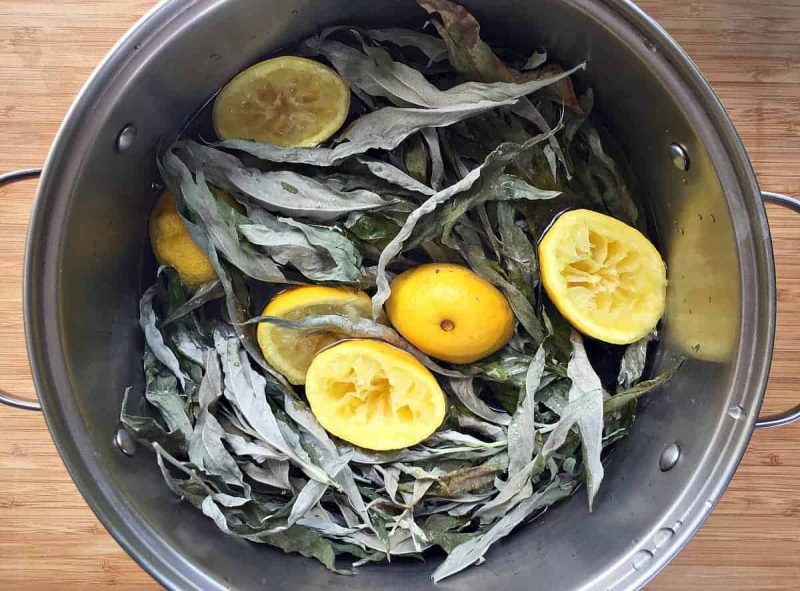
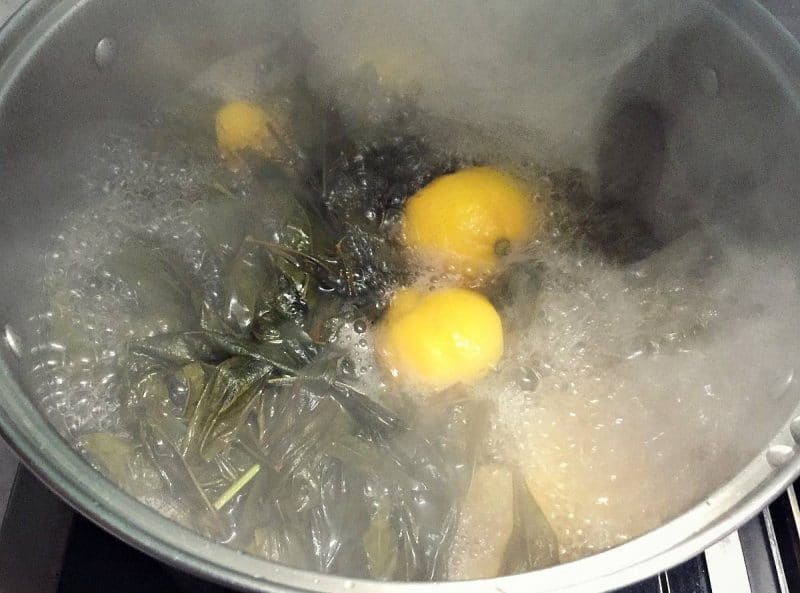
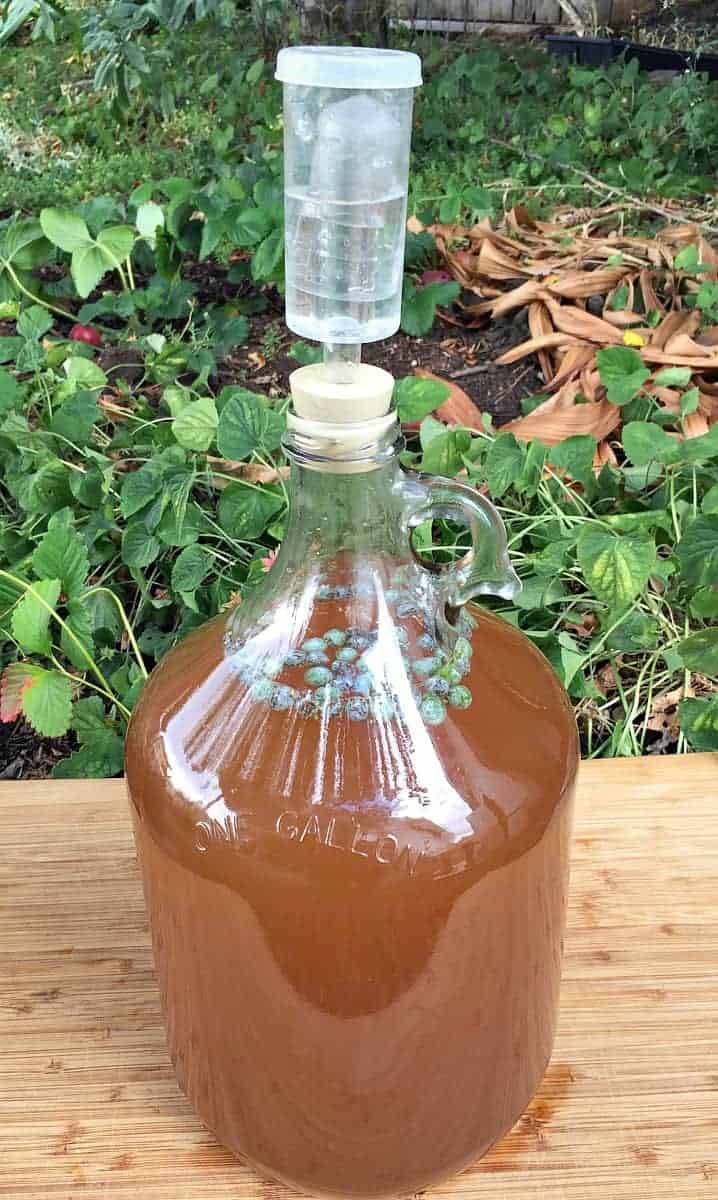
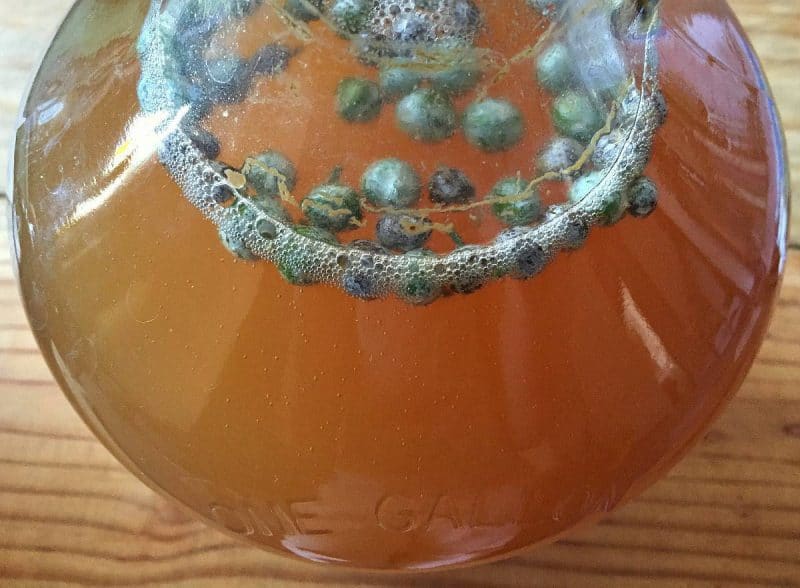
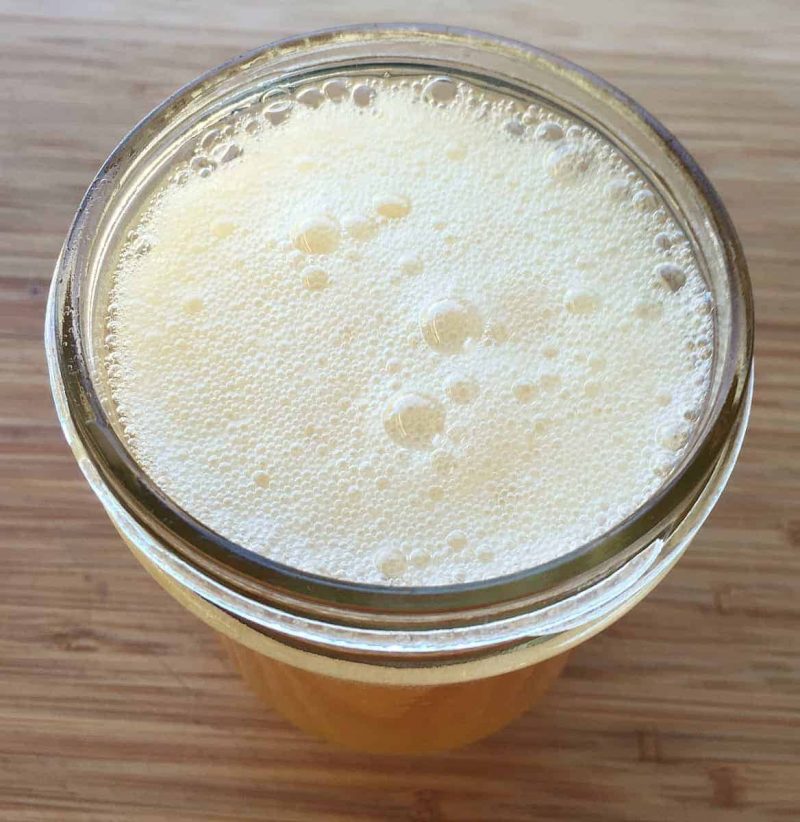
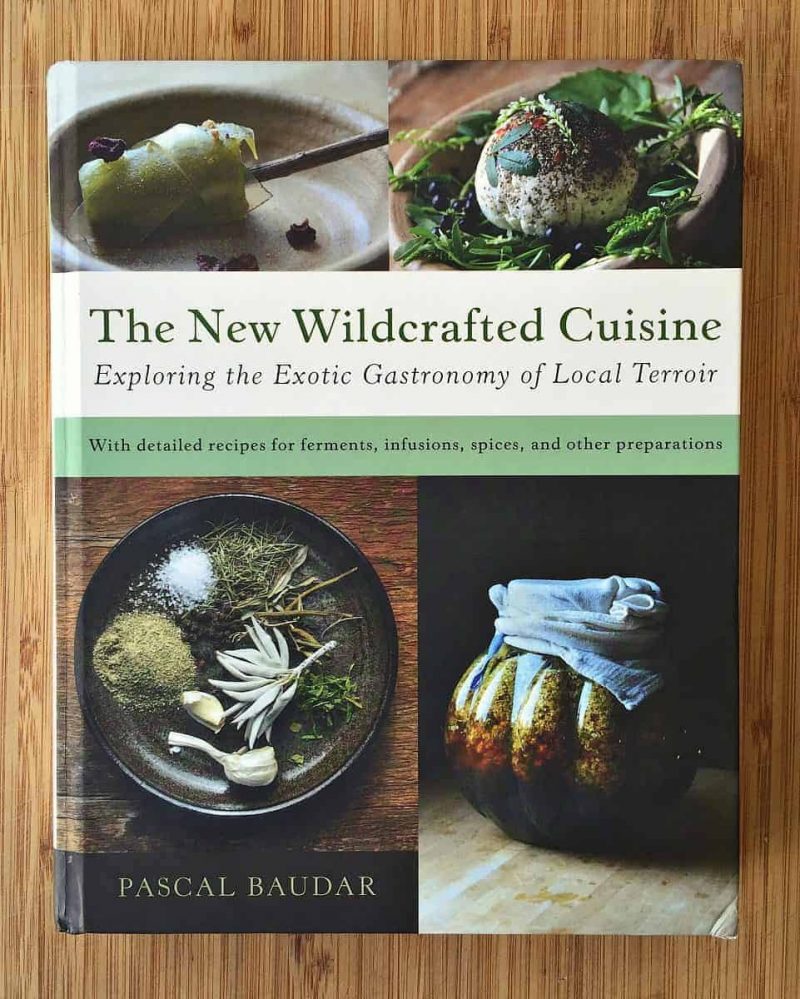
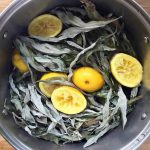

Thank you for inspiring me to learn! I love you posts and blogs about natural remedies and herbal crafting ideas! I have never tried fermenting, but now seeing how easy it is, I want to learn more!
This ties into my herbal classes I am currently taking!
I am looking forward to learning more natural fermentation options.
I’ve never brewed before but I’ve been a long time follower of his and would love to try some of his recipes!
What a unique combination – so pretty, too!
This looks amazing! I just finished bottling some hard apple cider and I can’t wait to try more fermenting.
My ferments also seem to not do very well, perhaps living in a basement is not the best thing for fermenting.
I’ve never done any home brewing, but I would love to!!
I recently took a class with Pascal and flipped through his book there. It looked awesome.
I just bottled my second batch of mead. It’s better than my first. I haven’t made beer or wine yet.
This sounds like a fun book! I have added it to my wishlist!
I have never had luck with brewing. My ferments always go funky. Thanks for the info on using wild yeasts. Maybe i just need to start working with the wild yeast instead of against it.
I still haven’t made any of my own brews. I’m patiently waiting for the elderberries to ripen across the street from me and then I would like to attempt elderberry mead. Thanks for the inspiration.
I have been following Pascal’s posts on the fermentation blogs and salivating over his book! I even had it in my Amazon cart but haven’t pulled the trigger yet. He is doing amazing things with wild plants.
I’ve made ginger beer!
Thanks for the chance to win. Can’t wait to see all of the recipes. My elderberry are doing very well this year.
I love fermenting and brewing – I gotta try this!
I am new to making my own fermented treats and beverages but absolutely cannot wait to try!
I’d love to try this and that book looks amazing!
I made rice wine using red rice and a corn starter! It tasted a bit yeasty for me. The “dregs” are eaten traditionally sweetened or unsweetened.
I tried making prickly pear “tuna” wine last year and failed due to forgetting to manage it properly. I might give it ago again this year with Elderberries, if Arizona ever actually gets a normal monsoonal rain pattern established and the bushes fruit heavily enough.
No I haven’t, but I would love to. I also love to follow Pascal’s adventures in wildcrafting on facebook..
I’ve made ginger beer a few times, and planning to make a honey ferment after the summer has passed and the weather cools a bit.
We home brew and would love to win a copy of Pascal’s book. Thanks for the chance!
I’ve only brewed beer from a kit, but I’m definitely going to be trying this. Thanks for the info!
This looks delicious. I’m going to have to do a little more research on where I can find mugwort.
I believe mugwort is another name for Wormwood which is a common herb found at nurseries.
Mugwort & wormwood are different plants from the same (daisy) family. They are: Artemisia vulgaris & Artemisia absinthium, respectively.
I made. An elder flower ‘champagne ‘ with just wild yeast and it turned out great! I may give this a try after I make my mead.
This beer looks amazing! I just started my very first mead last week with black raspberries and am quite excited to see how it will turn out!
Nice recipe! I love Artemesia vulgaris both young and older in beer, kombucha and tinctures. Young leaves have a gingerbread like flavor, older ones are great bitters.
This looks great! Will definitely try this. I’m a mead/cider brewer and sometimes get stressed by the amount of tech and whatnot that beer requires. So this is closer to my style. Thanks for sharing!
Have been following your fb page for a bit now (just pickled some cucumbers using your fermentation recipe), and really like how you are showcasing Pascal. Being relatively new to fermentation and wildcrafting, we had not heard of him. So glad to now be following Pascal on fb too!